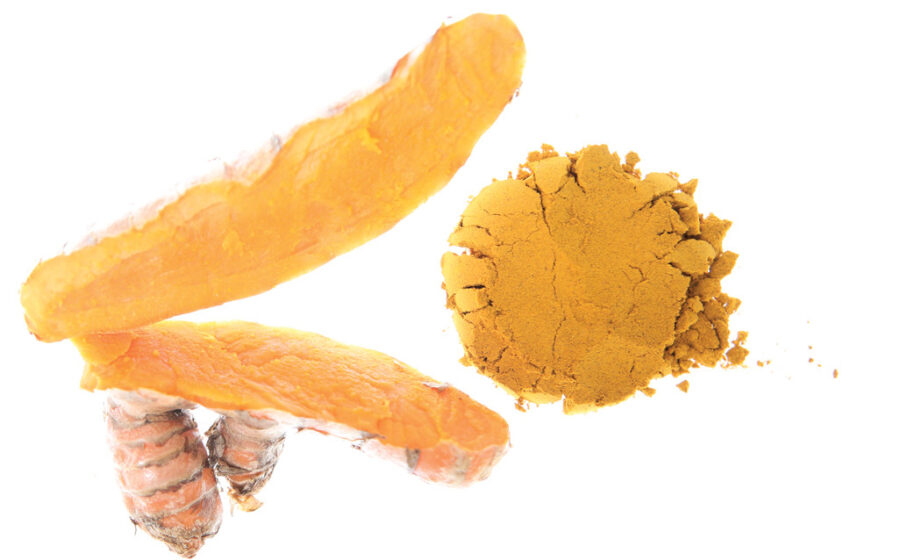[W]ith a hue as vibrant as the setting sun and a taste evocative of the subcontinent, it’s no wonder turmeric has caught the attention of artisans, alchemists, wellness practitioners, and herbalists for centuries. Whether used for its earthy and robust flavor in cooking, its brilliant gold color in dyes, or its esteemed medicinal properties in health practices, turmeric has proven its worth, becoming a highly revered and distinguished spice across the world.
Due to its culinary versatility and numerous health benefits, Americans are increasingly turning to turmeric in their daily diet. Over the years, we have become more and more familiar with turmeric as we blend ingredients in the kitchen (stirring our curries, spreading our mustard, or adding a kick to our health drinks). Turmeric has become a mainstay in the spice rack of Americans, and it’s becoming a main ingredient in beverages and tea concoctions around the world. When I’m blending teas at Numi Organic Tea, where I’m the CEO and blender, I am thrilled to combine this powerful root in numerous herbal tisane blends. Turmeric brings together my love of tea, travel, and exotic and healthful herbs.
Ancient Tonic: An trusted Indian home remedy, amber-hued turmeric milk (haldi ka doodh) is said to shorten colds and soothe coughs. Grate an inch of fresh turmeric, warm it in milk or milk with ghee (clarified butter), strain, blend in honey for sweetness, and revive over this therapeutic tradition. For a spicier variation, add cardamom or fresh ginger to the steep, or saffron for even more color and a sweet aroma.
Turmeric derives from the root of the Curcuma longa plant, a member of the ginger family. Native to India and Southeast Asia, the plant can be spotted by its robust green leaves, thick cone of flowers, and tough skin. Once harvested and sliced open, the root’s deep orange flesh is revealed. It is this flesh, the meat of the root, which gives turmeric its vibrant and captivating coloring.
Turmeric boasts an earthy and robust flavor, blending perfectly with hints of ginger and licorice, rooibos, rose, chamomile, or dried lime and lemon verbena. The result? A cleansing, invigorating, and enlightening tisane retreat. This was my inspiration as I began creating Numi’s line of Turmeric Teas. I searched for tastes that would complement the vibrancy of turmeric’s natural color. I dreamed up combinations that would take tea lovers on a journey of revitalizing flavors.
As I embark on the journey of blending unique ingredients to create Numi’s teas, I am inspired by the vitality of this spice. I notice this incredible root popping up in the most eccentric and powerful ways as I travel to remote areas around the world: in Indonesia turmeric is consumed as a pure drinking shot, sometimes mixed with lemongrass (similar to a wheatgrass shot in the United States). In Europe, it is mixed with ginger, fruit, and fresh vegetables for green energy drinks. In India and my home country of Iraq, turmeric is considered a sultry spice that throws complexity and life into any dish. For many people, turmeric is stepping into the role once reserved for ginger. What sets it apart, however, is its subtler flavor and its rich, powerful, long-lasting health effects.
What lies beyond the golden hue is astounding: turmeric is a powerful healer according to traditional Chinese and ayurvedic medicine. In Western medicine, its medicinal compound, curcumin, has been associated with anti-inflammatory properties, pain and arthritis relief, soothing an upset stomach, liver detoxification, cancer fighting, and healing skin. The science supporting this is based on cell cultures and small trials; it’s young, but there are a lot of exciting possibilities.
There is no doubt that turmeric will continue to be a leader in the food, beverage, art, and health communities. I am inspired by the various ways I see this root used and will continue to encourage my friends, colleagues, and fellow tea drinkers to fill their lives with this robust, healthful golden spice.
—Ahmed Rahim is the co-founder of Numi Tea.
















